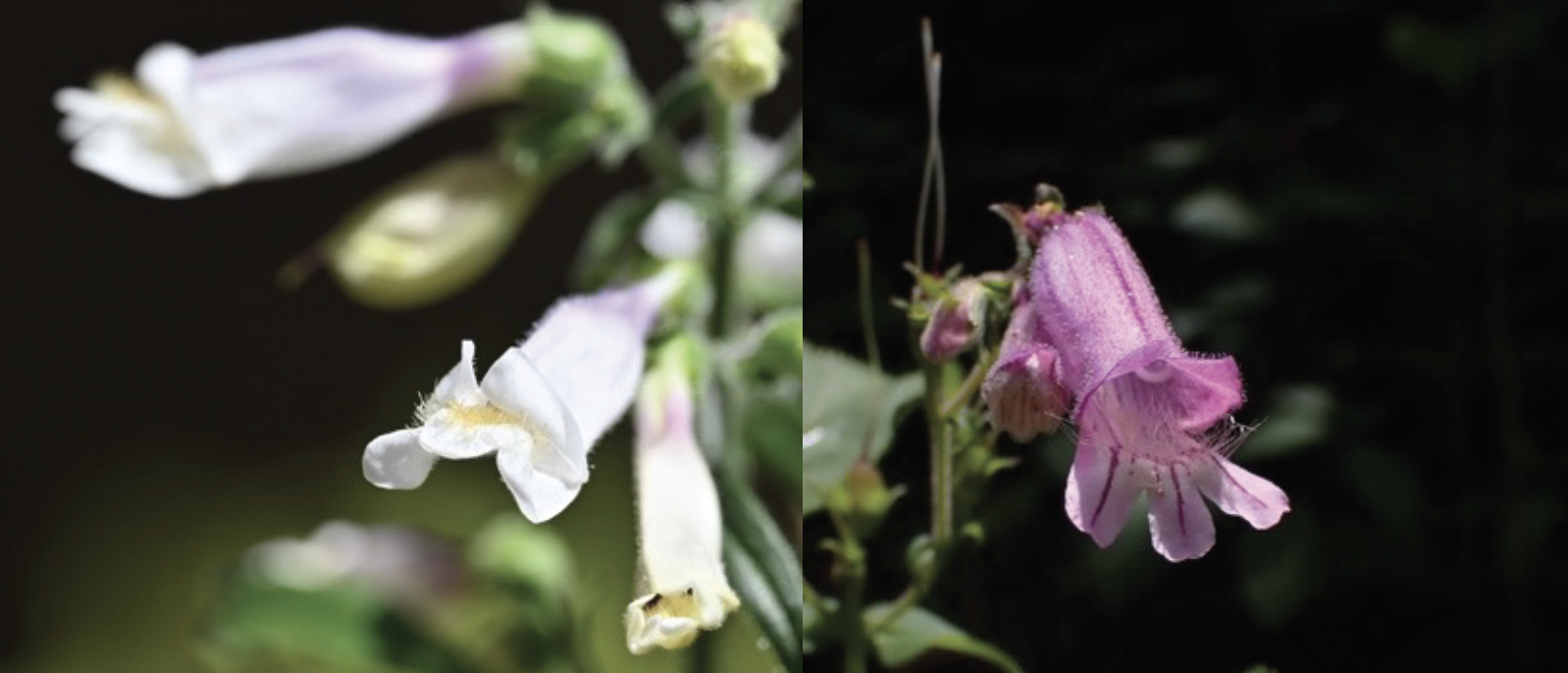|
Trinity Depatie
Graduate Student
University of South Carolina
Biological Sciences
Posted 6-19-23
Twitter: @TrinityDepatie
I have always been interested in the underlying evolutionary mechanisms that maintain floral diversity, but it wasn’t until the last couple years of my undergraduate studies that I realized my passion for the field of evolutionary genetics in plant systems. My research broadly focusses on the evolution of novel floral traits. For my dissertation, I am working to understand the ecological function and genetic basis of personate flowers in Penstemon wildflowers. Personate flowers are characterized by an upward bulge in the lower lip of the corolla tube that ultimately seals off the floral passageway. This floral trait has evolved at least two times in the genus Penstemon, but no previous research has focused on understanding why or how this trait evolved.
To answer my question regarding the ecological function of personate flowers I am completing both pollinator observations and a mating system study. The pollinator observations provide me with the opportunity to determine if personate flowers are filtering pollinators in any way. I conduct my pollinator observations in natural Penstemon populations which has allowed me to visit some of the amazing plants I work with in the wild! In fact, one of my focal personate species, P. hirsutus, grows along the rocky bluffs of the Cumberland River in Northern Tennessee… a beautiful location with very cool plants. The mating system study is driven by my observation that the upward bulge in the lower lip of personate flowers causes the anthers and stigma to be closer to each other (compared to their positions in the open-tubed flowers). My hypothesis is that the decreased distance between reproductive structures makes personate flowers better adapted to selfing. To test this hypothesis, I assign both open-tubed and personate flowers to different treatment groups and then quantify seed set to determine the fitness of each group.
Finally, to understand how personate flowers evolved I am conducting a Quantitative Trait Locus (or QTL) mapping analysis. Broadly, this analysis looks for correlations between phenotypes and genotypes within an F2 mapping population. I completed my initial parental cross for this study during my first year of grad school and three years later an initial batch of F2 plants are about to flower! The floral phenotypes of the F2 individuals will provide the ability to make predictions regarding the number of loci that are responsible for personate flowers. F2 flowers that can be categorized as completely open, completely personate, or intermediate could indicate that this trait is simple, and few loci of major effect are responsible. Contrarily, F2 flowers could display a wide gradient of “personate-ness” indicating that this trait is complex and involves many loci of small effect throughout the genome. I am super excited to see these flowers… stay tuned on my twitter for updates!
 |
Personate P. hirsutus (left) and open-tubed P. smallii (right)
How Trinity got interested in the botanical sciences:
I had my first taste of research during my time as an undergraduate at Florida Atlantic University’s Wilkes Honors College. In my junior year I became fascinated with a special plant that grows on the dunes of a few South Florida beaches – the Beach Peanut (Okenia hypogaea). I learned that the beach peanut’s limited distribution along the Atlantic coast of South Florida resulted in this plant earning an endangered classification. However, I later noticed that this plant occurs on both the Atlantic and Pacific coasts of Mexico which made me wonder why it occurs on a few beaches in Florida. I was also curious if there were differences between the plants in Mexico and Florida. While taking a Field Ecology course I asked my professor, Dr. Wetterer, these questions and he was very intrigued! We began to develop a population genetics project for my honors college thesis, which consisted of a large amount of sampling on the beaches of Mexico and Florida. After collecting leaf material for all my populations, I began working in the Soltis Lab at the University of Florida to complete the molecular benchwork required for the project. The excellent mentorship that I received throughout my time in the Soltis lab truly solidified my desire to attend graduate school.
Trinity's advice for those just starting their botanical journey:
Stay curious and try not to be nervous about asking questions. Science thrives and progresses forward when people ask questions, so go ahead and ask your questions… who knows where they will lead!
Trinity's other passions:
Outside of lab you can find me looking for and photographing wildflowers, riding horses, baking, or reading. I also spend a large amount of time with my three orange cats – Honey Bee, Wall-e and Sunfyre.
Click here to return to BSA Spotlight Series homepage.
|